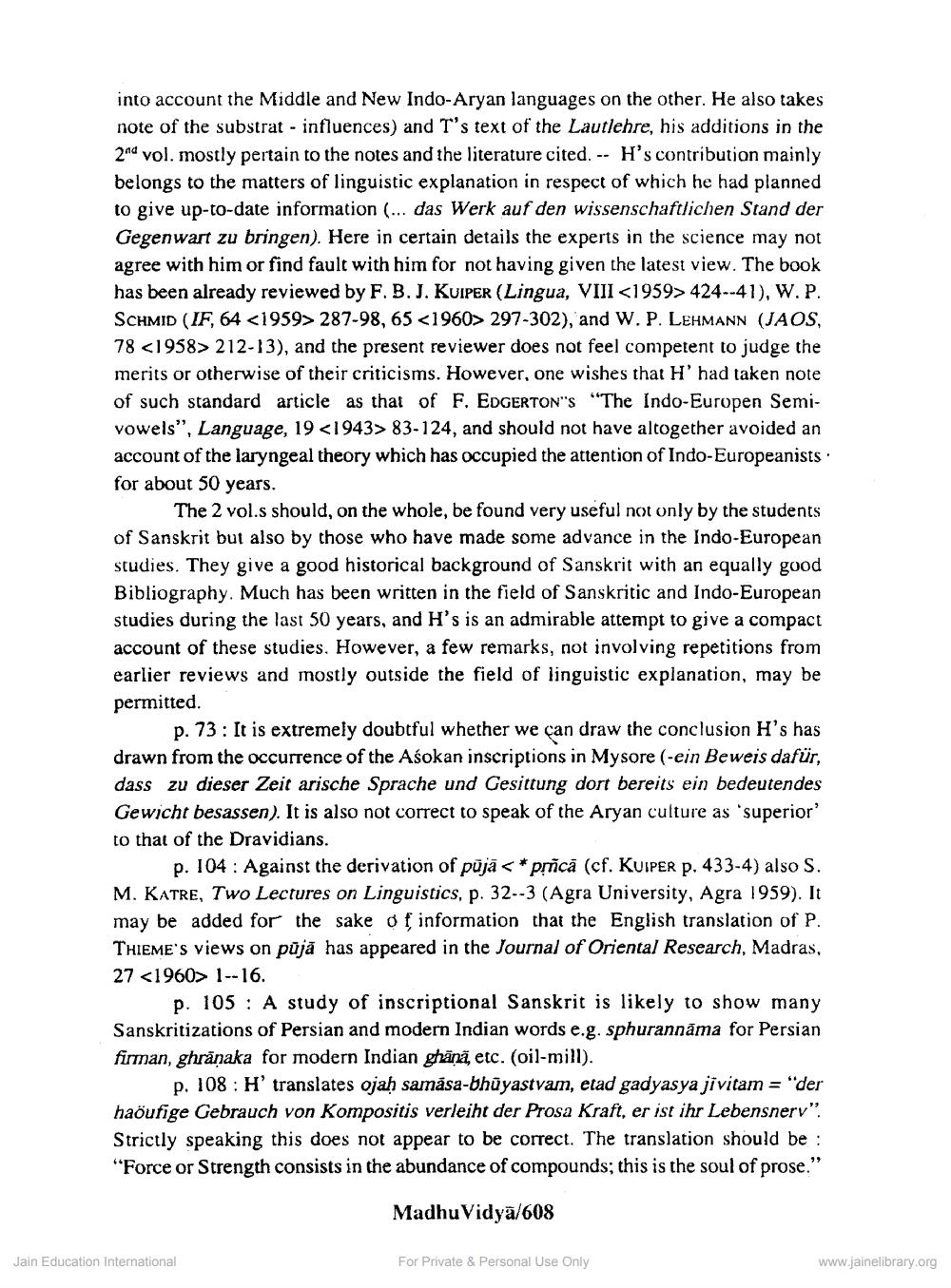________________
into account the Middle and New Indo-Aryan languages on the other. He also takes note of the substrat - influences) and T's text of the Lautlehre, his additions in the 2nd vol. mostly pertain to the notes and the literature cited. -- H's contribution mainly belongs to the matters of linguistic explanation in respect of which he had planned to give up-to-date information (... das Werk auf den wissenschaftlichen Stand der Gegenwart zu bringen). Here in certain details the experts in the science may not agree with him or find fault with him for not having given the latest view. The book has been already reviewed by F. B.J. KUIPER (Lingua, VIII <1959> 424--41), W. P. SCHMID (IF, 64 <1959> 287-98,65 <1960> 297-302), and W. P. LEHMANN (JAOS, 78 <1958> 212-13), and the present reviewer does not feel competent to judge the merits or otherwise of their criticisms. However, one wishes that H' had taken note of such standard article as that of F. EDGERTON"S "The Indo-Europen Semivowels”, Language, 19 <1943> 83-124, and should not have altogether avoided an account of the laryngeal theory which has occupied the attention of Indo-Europeanists for about 50 years.
The 2 vol.s should, on the whole, be found very useful not only by the students of Sanskrit but also by those who have made some advance in the Indo-European studies. They give a good historical background of Sanskrit with an equally good Bibliography. Much has been written in the field of Sanskritic and Indo-European studies during the last 50 years, and H's is an admirable attempt to give a compact account of these studies. However, a few remarks, not involving repetitions from earlier reviews and mostly outside the field of linguistic explanation, may be permitted.
p. 73: It is extremely doubtful whether we can draw the conclusion H's has drawn from the occurrence of the Asokan inscriptions in Mysore (-ein Beweis dafür, dass zu dieser Zeit arische Sprache und Gesittung dort bereits ein bedeutendes Gewicht besassen). It is also not correct to speak of the Aryan culture as 'superior to that of the Dravidians.
p. 104 : Against the derivation of pūjā < * prñca (cf. KUIPER p. 433-4) also S. M. KATRE, Two Lectures on Linguistics, p. 32--3 (Agra University, Agra 1959). It may be added for the sake of information that the English translation of P. THIEME's views on pūjā has appeared in the Journal of Oriental Research, Madras, 27 <1960> 1--16.
p. 105 : A study of inscriptional Sanskrit is likely to show many Sanskritizations of Persian and modern Indian words e.g. sphurannāma for Persian firman, ghránaka for modern Indian ghānă, etc. (oil-mill).
p. 108 : H' translates ojaḥ samāsa-bhūyastvam, etad gadyasya jivitam = "der haoufige Gebrauch von Kompositis verleiht der Prosa Kraft, er ist ihr Lebensnerv”. Strictly speaking this does not appear to be correct. The translation should be: "Force or Strength consists in the abundance of compounds; this is the soul of prose."
Madhu Vidyā/608
Jain Education International
For Private & Personal Use Only
www.jainelibrary.org




